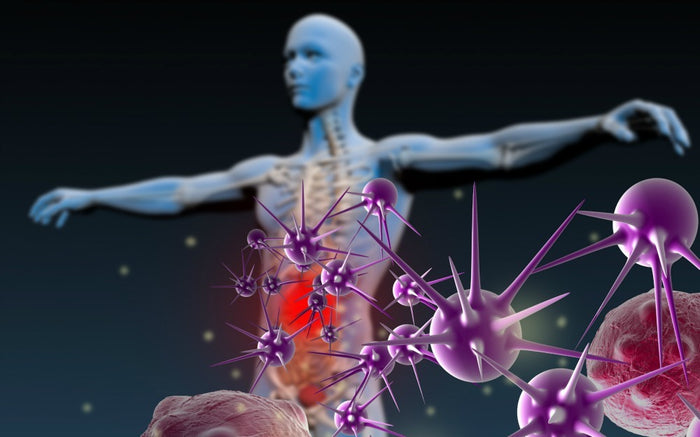In this article
What is it the Immune System, and What is it Protecting Us From?
The human immune system is one of the most miraculous and remarkable systems in the natural world. It is your body’s primary defense mechanism against foreign invaders, or pathogens. Your immune system is made up of a variety of cells throughout your body, from your skin, bloodstream, bone marrow, and more [1]. To best fight infection, the immune system maintains a memory of every pathogen that it has ever encountered, along with a formula for how to fight and kill each of them. Among the trillions of microorganisms in the world, there are roughly 1400 known pathogens that can infect humans [2].
A pathogen is an infectious agent, or simply a germ, that can cause disease. The common human pathogens (the ones that infect humans) fall into four broad classes: viruses, bacteria, fungi and parasites. All of these pathogens need a host cell to survive. Once a pathogen sets itself up in a host’s body, it begins to replicate and multiply. If the immune system recognizes the pathogen, it will immediately begin to fight it, but when it encounters a new pathogen, it sometimes needs time to learn about the new invader to develop a defense against it [3].

Different types of pathogens
Key Immune System Structures
Our immune system is comprised of many biological structures and processes that are specialized in fighting pathogens. This vast network of cells and tissues is constantly on the lookout for invaders, and once an invader is spotted, a complex defense is mounted. There are some key characters involved in this defense: white blood cells, phagocytes and lymphocytes.
- White blood cells: Circulating in your blood vessels and lymphatic vessels, these are the patrol police that are constantly on the lookout for invaders. As soon as they find a target, they begin to multiply around the invader and send signals to other defensive cell types to do the same.
- Phagocytes: Four cell types consisting of neutrophils, monocytes, macrophages and mast cells, they surround, breakdown and absorb pathogens, effectively eating them up.
- Lymphocytes: A type of white blood cell that helps the body to remember previous invaders. These “b cells” and “t cells” produce antibodies, destroy compromised cells and alert other immune cells.

How a Defense is Mounted
Our defense system needs to be able to tell which cells are our own cells and which are foreign invaders. It does this by recognizing the proteins on the surface of cells. As our immune system develops over time from birth, it learns to ignore the proteins that it recognizes as “part of us”.
An antigen (the short form of “antibody generator”) is any substance that can put the immune system into action . It can be the pathogens listed above or it can also be our own cells that are not working correctly or are dead. Our white blood cells work together to recognize the antigen as a pathogen invader.

Once the antigen is identified, our B lymphocytes secrete special proteins called antibodies, that lock onto the invader. We have different types of B cells and each makes a specific type of antibody. The B cells don’t kill the invader, they just lock onto it and signal to other cells to do the kill job.
Enter the “helper” T cells (Th cells) and the “killer” T cells (cytotoxic T lymphocytes). The helper T cells coordinate the immune response, recruiting other cells, encouraging the production of additional antibodies and recruiting more T cells and phagocytes. The killer T cells, as implied by the name, attack the antigen. They work by recognizing small parts of the virus on the outside of infected cells and destroy the infected cells.
Developing immunity
As we are exposed to more and more pathogens during the course of our lives, our immune system learns about these invaders and develops a library through antibodies. Once an antibody has been produced, a copy remains in the body so that if the known invader re-emerges, it can be dealt with more quickly. This is why when you get a disease like chickenpox, you only get it once as this pathogen doesn’t mutate or change its structure.
References:
[1] https://www.niaid.nih.gov/research/immune-system-overview
[2] https://www.nature.com/articles/nrmicro2644
[3] https://www.ncbi.nlm.nih.gov/books/NBK209710/



